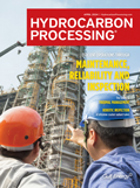Topsoe awarded contract to support FEED study for new low-carbon ammonia plant in Louisiana (U.S.)
Topsoe has signed a contract with CF Industries for the licensing and engineering supporting a front-end engineering and design (FEED) study of a new low-carbon ammonia plant in Louisiana.
CF Industries is evaluating the project in collaboration with Mitsui & Co., Ltd. Were the project to move forward, it would produce low-carbon ammonia for use as a decarbonized energy source.
Ammonia – either in the form of low-carbon ammonia or as an e-fuel – is expected to play a critical role in the world’s journey towards net zero: It can be transported using existing infrastructure; and it has multiple end-uses, not only as a fuel or hydrogen carrier but also to help decarbonize industrial processes like steel and cement production.
Henrik Rasmussen, Managing Director, The Americas, Topsoe, said:“We believe low-carbon ammonia helps unlock the door towards a net zero future. Our technology offers a cost-effective route to producing low carbon ammonia while also enabling carbon capture, at industrial proven scale. CF and Topsoe have a long-standing relationship spanning many decades and we are proud to extend our collaboration with this award.”
About SynCOR™
SynCORTM technology enables ammonia production as well as cost efficient carbon capture. SynCOR™ is Topsoe´s proprietary technology based on advanced autothermal reforming principles. Supported by 300 years of accumulative, safe operation, SynCOR™ is often the preferred technology for mega scale ammonia production, due to its maturity and low capital and operating costs.
SynCOR Ammonia™ is a technology break-through in the ammonia industry. Where ammonia plants today rely on conventional two-step reforming based on tubular steam methane reforming and an air-fired secondary reformer, SynCOR Ammonia™ utilizes a process based on oxygen-fired autothermal reforming.






Comments